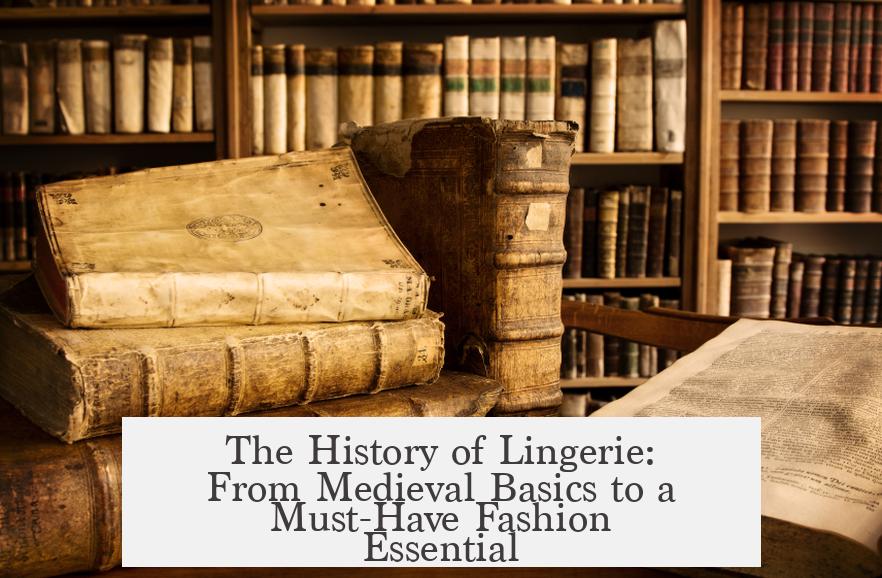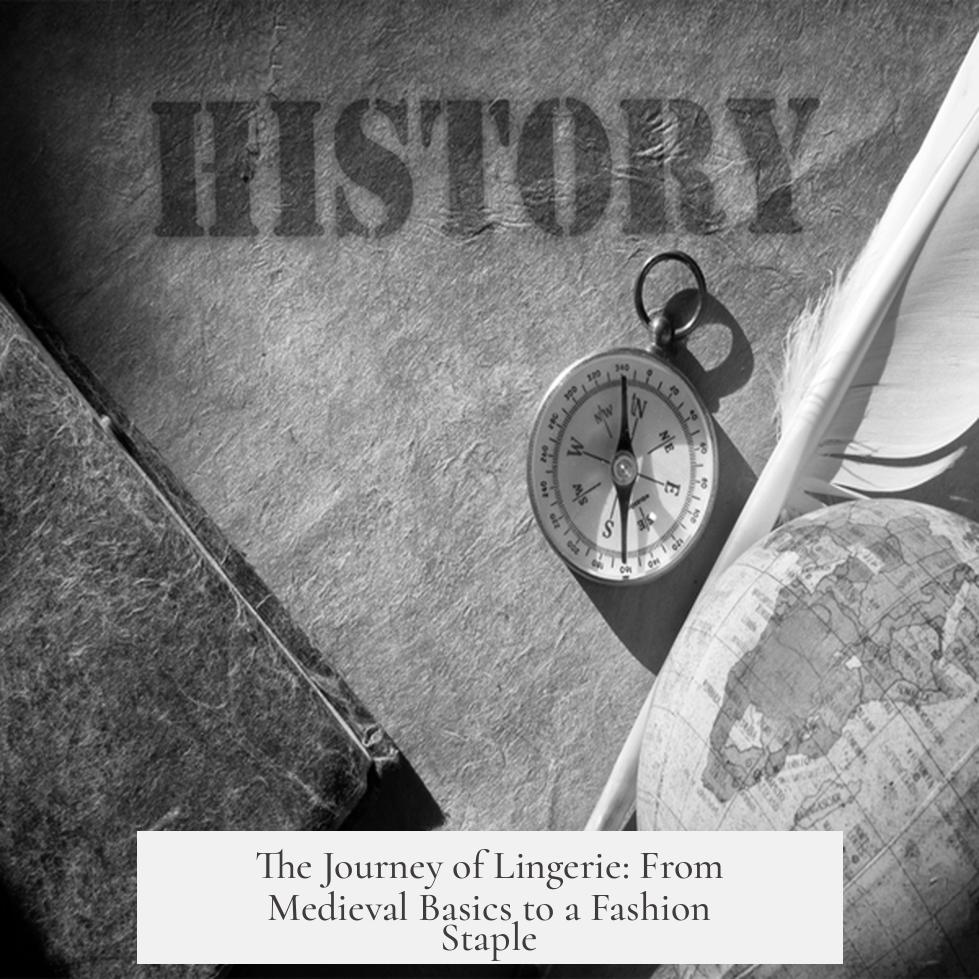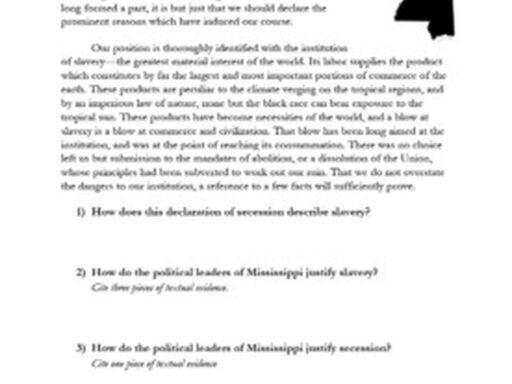Lingerie traces its roots to simple body linen garments worn for cleanliness rather than style. The term itself comes from the French word linge, meaning body linen. For centuries in Europe, people wore linen underclothes directly against the skin to protect outer garments from sweat and oils. This practice made lingerie an essential hygiene layer rather than a fashion statement.
Medieval lingerie, while not extensively documented, likely followed practical construction methods dating back centuries. Existing evidence from around 1600 onward shows undergarments made with basic geometric shapes—rectangles, triangles, and squares—to minimize fabric waste and allow ease of movement. These designs were fairly simple, serving the same fundamental purpose in both men’s and women’s clothing. Thus, the lingerie of medieval times was functional, not decorative.
Rich individuals sometimes used finer, sheer linen fabrics for their underclothes, lending a delicate appearance. However, these garments still prioritized hygiene over allure. Unlike the modern concept of lingerie, medieval undergarments weren’t intended to be sexy or visually appealing. Their main utility was to keep outerwear clean and comfortable.
The shift toward lingerie as an aesthetic commodity begins near the end of the 19th century. The industrial revolution brought cotton fabrics that were opaque and sturdy, gradually replacing linen for shirts, chemises, and drawers. Early cotton lingerie featured modest ornamentation such as embroidery or ruffles but remained largely practical.
By the 1890s, stores started selling lingerie made from lightweight, sheer cotton muslin or batiste. These fabrics maintained functionality yet introduced beauty as a key feature. This marked lingerie’s transformation from purely utilitarian body linen to an in-demand product with aesthetic appeal. Over time, lingerie evolved further into specialized garments emphasizing style, seduction, and personal expression.
- The word ‘lingerie’ originally referred to simple body linen.
- Medieval undergarments were basic and practical, constructed from geometric fabric shapes.
- Early lingerie focused on hygiene, not sex appeal.
- The late 19th century saw a shift toward lightweight fabrics combining function and beauty.
- Lingerie gradually became a fashionable, in-demand commodity linked to aesthetics.
The History of Lingerie: From Medieval Basics to a Must-Have Fashion Essential

What’s the history of lingerie? Was there medieval lingerie? And how did it become such an in-demand commodity? Let’s unravel this intriguing story — one stitch at a time.
Lingerie, as we think of it today, evokes images of delicate lace, sheer fabrics, and a dash of tantalizing allure. But the term itself carries a humbler origin. It derives from the French word linge, meaning body linen. For centuries, what we now call lingerie was plain and practical clothing worn closest to the skin. Not exactly the sultry stuff found in modern boutiques.
Medieval Lingerie: Practicality Over Passion
Did medieval people wear lingerie? The honest answer is yes, but not the glamorous kind we’re used to. Historical examples of undergarments reliably date back to around the 1600s, but experts believe similar garments existed much earlier, into the Middle Ages.
Medieval lingerie was all about function. Garments were cut using geometric shapes — rectangles for the front, back, and sleeves; triangles at the hem for flexibility; squares under the arms for ease of movement. These shapes ensured materials were used efficiently, producing little fabric waste. Eco-friendly? You bet.
This wardrobe staple wasn’t designed to impress or seduce. Instead, it served a vital role: hygiene. People wore linen shifts and chemises next to the skin. Linen could be laundered or aired out, shielding outer garments from the wearer’s daily grime and sweat. Cleanliness mattered, especially considering how infrequently outer clothing was washed in those times. Wearing a linen underlayer helped keep everything else fresher for longer.
From Heavy Linen to Sheer Delight: The Evolution of Fabrics

Fast forward to the 19th century. Linen gave way to cotton as the preferred material. But make no mistake—cotton back then was nothing like the soft, silky fabrics we think of today. It was opaque, tightly woven, and used much like linen had been, prioritizing durability and hygiene.
Embroidery, ruffles, and modest trims appeared, but ornamentation remained subtle. The chemise might have beautiful stitching on the yoke; drawers could boast a ruffle or two. However, these touches were hardly meant to be flaunted. Practicality still ruled the day.
The Birth of Sexy Lingerie: A Late Victorian Affair
When did lingerie start to lean into aesthetics? That shift begins in the 1890s. Retailers began offering garments made from lightweight, slightly sheer cotton muslin or batiste. These materials maintained the functional goals of lingerie but added a touch of visual appeal. Finally, undergarments could be both heroic in hygiene and charming in looks.
The wealthy had access to finer linens earlier, with more delicate, sheer fabrics that draped elegantly. Still, even these luxurious underclothes weren’t expressly designed for seduction as modern lingerie is. The purpose remained grounded in hygiene, comfort, and subtle elegance.
From Underwear to In-Demand Commodity: The Rise of Lingerie

So how did lingerie become the fashionable, highly desired product it is today? The answer is a mix of social change, evolving fashion, and savvy marketing.
By the 20th century, society’s views on women’s bodies and sexuality had shifted. The idea of lingerie as erotic wear gained traction, especially with the rise of Hollywood, fashion magazines, and department stores. Designers started creating lingerie that celebrated the female form, emphasizing aesthetics alongside practicality.
Mass production and advances in textile manufacturing made lingerie more accessible. Lace, silk, satin, and stretchy materials entered the scene. Lingerie moved beyond mere underwear — it became a statement, a confidence booster, even a form of empowerment. The lingerie market exploded, turning this once purely functional garment into a thriving industry worth billions today.
What Can We Learn From Lingerie’s Journey?
- Practical origins: Lingerie began as protective body linen to safeguard clothing from body oils and dirt.
- Medieval minimalism: Early designs relied on simple geometric shapes for ease and fabric efficiency.
- Material evolution: Linen gave way to cotton; decoration kept minimal until the late Victorian era.
- Aesthetic awakening: Late 19th century saw the introduction of sheer, delicate undergarments marrying function with beauty.
- Commercial boom: The 20th century and beyond transformed lingerie into a fashion commodity linked with empowerment and style.
Imagine being a medieval tailor tasked with making the perfect undergarment for a noblewoman. Your job wasn’t glamorous—your tools were basic, and fabric was precious. Yet, you employed sharp geometry and practical fabrics to meet a key need: hygiene. Nothing flashy, just protection hidden beneath layers of heavier, dirt-prone clothing.
Now, flash forward to today. That same undergarment has blossomed into a celebration of form and function, often displayed proudly rather than hidden away. This transformation tells us a broader story. Women’s roles, fashion tastes, and technology have all shaped lingerie into what it is now.
Practical Tips: Choosing Lingerie With History in Mind

Looking for lingerie that’s both comfortable and stylish? Consider its roots. Fabrics that breathe, such as cotton or linen blends, reflect lingerie’s original purpose. For special occasions, turn to lace or silk to sleep with your Victorian dreams.
Remember, lingerie serves two main purposes—comfort and confidence. Whether you prefer classic simplicity or intricate designs, understand that your choice carries centuries of history stitched into every seam.
Final Thoughts: More Than Just Pretty Clothes
Lingerie is more than sexy nightwear. It’s history you can wear. From humble linen shifts in the Middle Ages to the dazzling lace ensembles today, lingerie charts social changes, technological advances, and shifts in culture.
Next time you slip into your favorite set, pause to appreciate the centuries of evolution it embodies. It’s not just fabric. It’s a legacy of function, beauty, and empowerment stitched delicately together.




